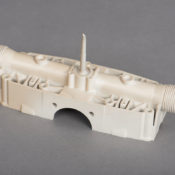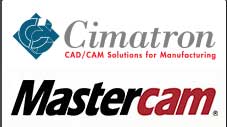 Products made with plastic injection molding include automotive and airplane components, storage containers, musical instrument parts, and hair combs. It is one of the most widely used manufacturing processes because of its ability to produce enormous amounts of the same item in a variety of plastic compounds including polycarbonate, polystyrene, polyethylene, polypropylene, polyvinyl chloride and acrylic.
Products made with plastic injection molding include automotive and airplane components, storage containers, musical instrument parts, and hair combs. It is one of the most widely used manufacturing processes because of its ability to produce enormous amounts of the same item in a variety of plastic compounds including polycarbonate, polystyrene, polyethylene, polypropylene, polyvinyl chloride and acrylic.
Clamping and Injection
The process cycle for making one item on a plastic injection molding machine is typically short. In the clamping stage, steel or aluminum mold halves are secured together by a hydraulically powered unit before a plastic compound is injected in between them. At the injection stage, plastic compounds are heated and pressed until molten. “The shot” refers to the amount of plastic injected into each mold half. Injection pressure, injection power, and shot volume are used by the machine operator to calculate injection times.
Solidifying and Ejection
Once the melted plastic makes contact with the mold surfaces, it starts to cool and solidify. Packing plastic material during the injection stage allows extra material to enter the mold, so shrinkage does not affect the desired product size. Some shrinkage usually occurs due to rapid cooling, so packing allows extra material to enter the mold.
Upon sufficiently solidifying the part, the ejection system of the machine opens the mold and pushes the hardened object out. To cleanly remove the item, strong force along with a mold release agent is necessary. Mold opening and ejection times are determined by the dry cycle time and how long it takes the finished plastic piece to fall into a container. As the molds clamp shut, they are moved around the machine to the injection area.
Quality Control
Plastic injection molding machines produce products with common defects caused by incorrect machine settings. Flash defects, for instance, are caused by excessively high injection pressures or too low clamp forces. Non-uniform cooling rates may cause warping. Parts with tiny bubbles could be the result of too much moisture in the plastic compound or an excessive injection temperature. Finally, products displaying ejector marks could have been subjected to high ejection forces or short cooling times.

